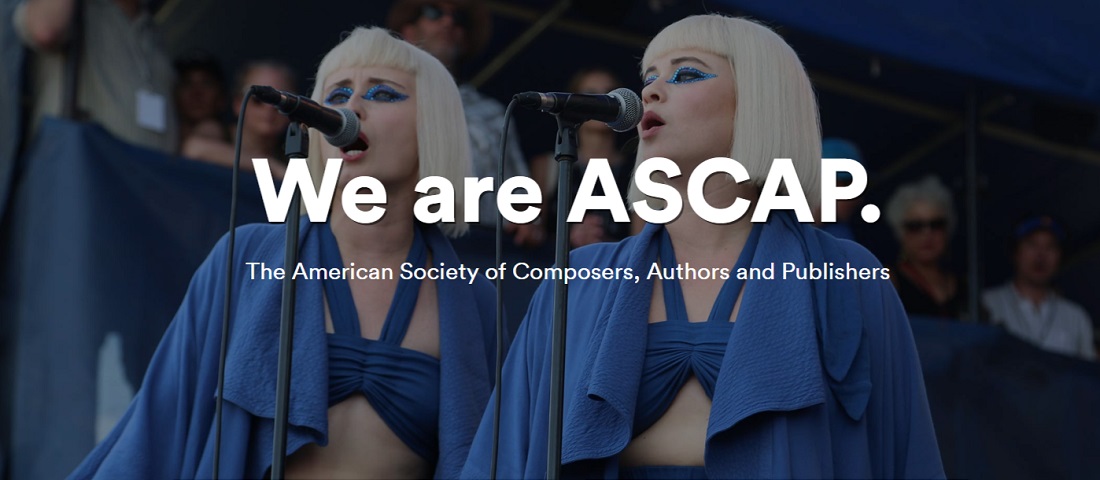With 22 million new tracks uploaded on Spotify every day, professional and amateur musicians are certainly thinking about protecting their music.
Artists want to share their music with the world, but they still want to take credit for it, and this is the importance of copyright and royalties.
So, what is ASCAP?
Keep on reading to find the answer to this question.
What is ASCAP?
ASCAP is the American Society of Composers, Authors, and Publishers.
It’s an American organization that doesn’t aim to make profits and focuses on regulating performance rights.
This organization helps its members by licensing the published performance rights of their musical creations when they’re performed at different venues or streamed to broadcasting services like TV and radio stations, and digital streaming services like Apple Music and Spotify.
ASCAP is the oldest performance rights organization or PRO in the US, as it was launched in 1914.
Although other organizations joined the market in later years, ASCAP continues to be the most established one in the business, with some of the most famous names in the industry listed as members.
The organization charges users for the music created by members of the ASCAP and then gives this money or royalties back to the creator.
In this sense, ASCAP acts as a middleman. So, the person using or listening to the music doesn’t have to pay the artist directly.
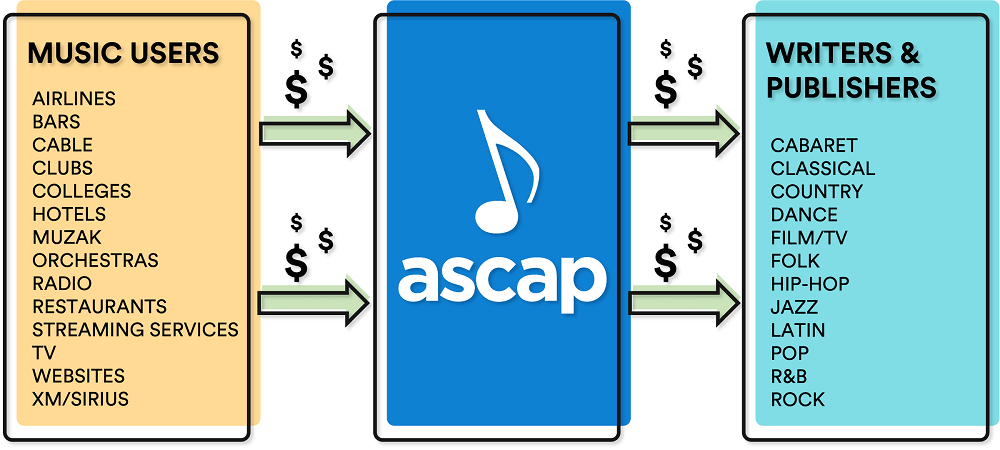
ASCAP protects the rights of all the artists who collaborated to create the music piece, song, or track.
The performance royalties are later divided between the singer, the composer, and the music writer.
This entity is owned and run by the members, and currently has more than 700,000 members, governing and protecting millions of compositions.
ASCAP is run by an elected board of members.
When there’s an artist with no publisher or publishing contract, they can collect 100% of the performance royalties collected by the ASCAP.
However, this is rarely the case.
In most cases, the songwriter can only collect 50% of the royalties, while the rest belongs to the publisher; the record label in most cases.
This organization can’t collect mechanical royalties, which are collected when a song is reproduced in digital and physical formats through recording and distributing the artwork.
When the song is used to produce a digital ringtone or an interactive stream, the songwriter or producer gets paid mechanical royalties.
These are different from the publishing or performance royalties that ASCAP can collect.
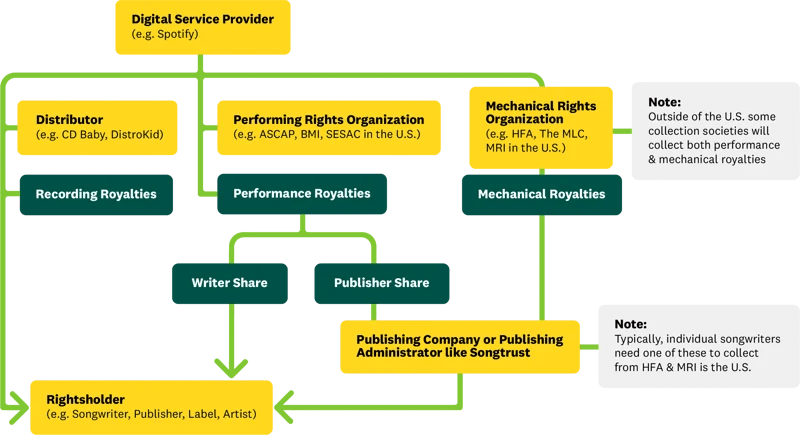
The only way an artist can collect mechanical royalties is by signing a deal with the publisher.
In most cases, the record label is the only entity entitled to the mechanical royalties according to these contracts, and the artist is usually offered a flat rate or a percentage of royalties.
How Does ASCAP Calculate Royalties?
ASCAP follows a rather complicated system to calculate and distribute royalties.
This organization keeps track of how music is used through digital and manual reports, to be able to charge users for the music they’re using.
However, the process can be a little inaccurate because in some instances there will be no record whatsoever of when the song is used.
In this case, ASCAP won’t be able to charge and collect the publishing royalties.
Nevertheless, ASCAP has some agreements to govern its work.
For example, it collects reports from venues registered with the organization to charge them if a cover artist performs a song that was written by someone else.
The calculation of royalties takes the different performance types into consideration.
For example, a song used in a TV show or movie generates more money and royalties than when someone plays the same song on their Apple Music account.
How Does ASCAP Pay its Members?
According to ASCAP, 88% of every dollar it receives is paid to the members in publishing royalties.
The rest is used to improve the services and benefits offered to members.
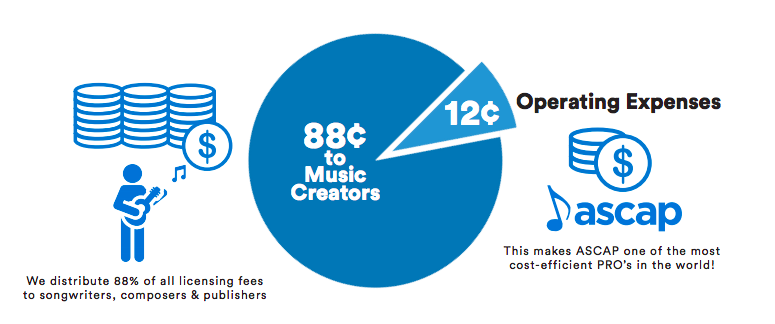
For payment purposes, the year is divided into three-month intervals.
If the performance occurs between January and March, the publisher is paid in September, while the writer is paid in October.
For performances between April and June, the publisher is paid in December, while the writer is paid in January of the following year.
For performances between July and September, the publisher is paid in March, while the writer is paid in April of the following year.
Finally, for performances taking place between October and December, the publisher is paid in June while the writer is paid in July of the following year.
Once the money is due, ASCAP will directly deposit the money into the member’s bank account.
Members can also receive their money in physical checks, as long as the payment exceeds $100.
Most songwriters and publishers receive their money according to the current performance plan, which means that their royalties are received for all performances during three months.
Some songwriters, however, are paid according to another plan, called the averaged performance plan.
This plan calculates the average dollar value for all songwriters’ performances over several years.
It’s a little bit more complicated, so only long-term members will be interested in it.
What Other Benefits Does ASCAP Offer its Members?
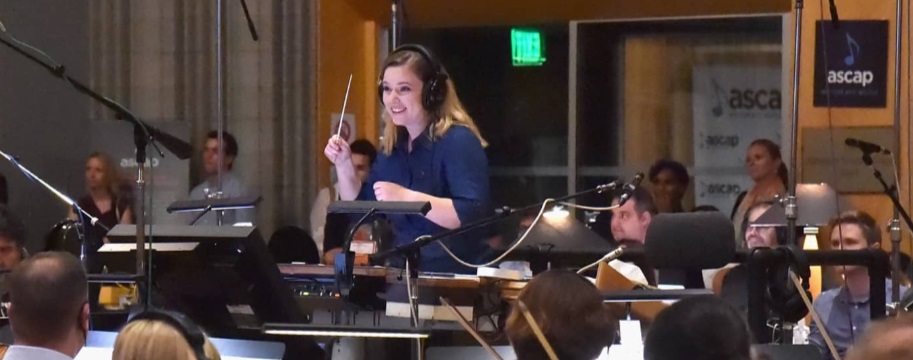
In addition to protecting the rights of songwriters and publishers, ASCAP offers its members several valuable benefits.
- Members receive a discount on several digital tools from the ASCAP marketplace. These digital marketing tools will help them sell and distribute their art more efficiently.
- The MusicPro Program offers discounts on health and dental insurance, in addition to musical instruments.
- ASCAP’s membership makes members eligible for membership in the USA Alliance Federal Credit Union, which offers several banking and loan products that can help aspiring artists expand their production and embark on their career journey.
- Members receive discounts on hotels and rental cars, which is a big plus for a touring band or artist.
- Songwriters can join the Hall of Fame for a discount.
- Members can access the annual ASCAP I Create Music Expo, where they can meet with the most prominent names in the music industry.
- ASCAP holds career development workshops to help musicians expand their scope and increase their productivity.
- This organization is affiliated with more than 80 international performance rights organizations, allowing artists to collect their royalties when their music is used internationally.
- The ASCAP Experience is an annual event that members can access to hear the most famous names in the business discuss new trends and products in the industry.
- ASCAP has a special program, called the ASCAP Plus Rewards. This is a unique program for songwriters who write children’s music and theater musicals.
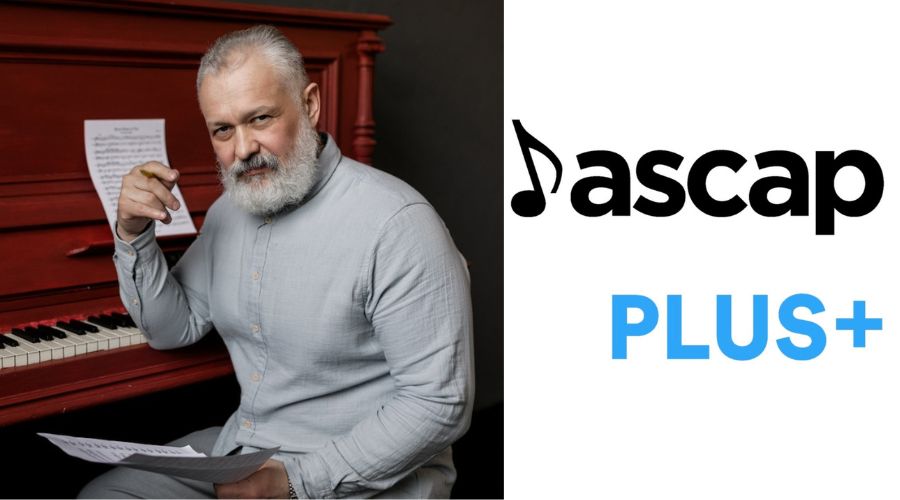
A songwriter who received less than $25,000 in royalties in the previous year can be eligible for this program.
It aims for rewarding songwriters for performances that are otherwise not rewarded by other performance rights organizations and by the ASCAP itself.
For example, when music is used in ballets and school plays, this usually doesn’t result in a performance royalty for the artist, but ASCAP has created this special program to offer these songwriters the compensation they deserve.
How Can I Become a Member of ASCAP?
You can become a member of ASCAP as a songwriter or publisher for a flat fee of $50.
This is not a recurring payment and there are no annual fees to retain your membership or receive your payments.
All you need is to register your security number and pay the money, and you’ll immediately be eligible for all the benefits.
If you’re a foreigner, you can use your foreign tax information, and still join ASCAP.
ASCAP has a lot of benefits but comes with some drawbacks.
For example, the organization has a big number of members, allowing songwriters and publishers to network with the most famous names in the industry.
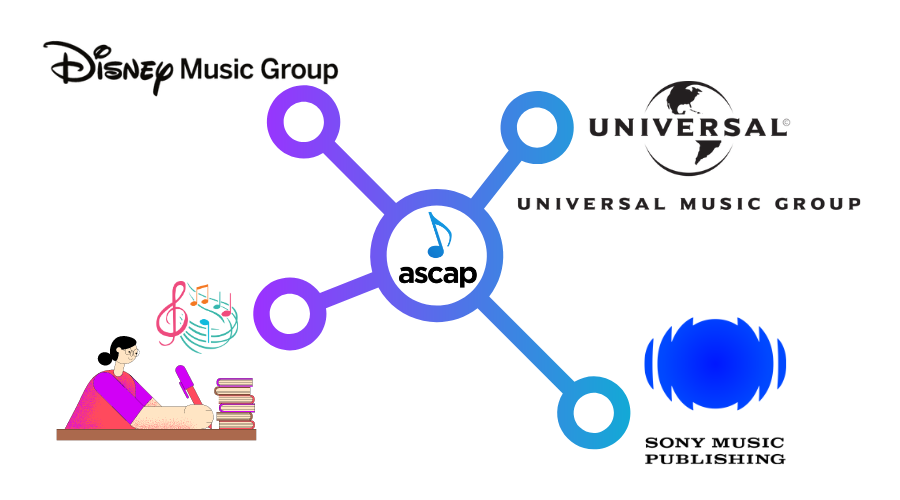
Moreover, because this is a well-established organization, it’s able to track performances across multiple venues and platforms, saving the rights of the artists who worked hard to create the art.
Nevertheless, you should also put all the pitfalls of this organization and its system into consideration. Here are some of them.
- The royalty calculation system is difficult to understand.
- Artists sometimes have to manually log in their performance history, which can be time-consuming and sometimes impossible.
- Payouts are sent a long time after the performance, which can be a big drawback for an aspiring songwriter.
- Although the membership is paid once, some artists are against it.
Who Uses ASCAP?
A lot of known artists are members of ASCAP to help protect their music creations.
Names like Katy Perry, Justin Timberlake, and Ariane Grande are just a few.
ASCAP is the best solution for any independent artist because it will protect your art and guarantee that you receive the money you deserve, regardless of when or how your music is used.
Whether you’re a songwriter, composer, recording artist, publisher, or any other copyright owner, you need to register with ASCAP, unless you’re already registered with another organization.
Otherwise, you’ll be missing out on a huge income opportunity that you deserve.
Is ASCAP Better than SESAC and BMI?
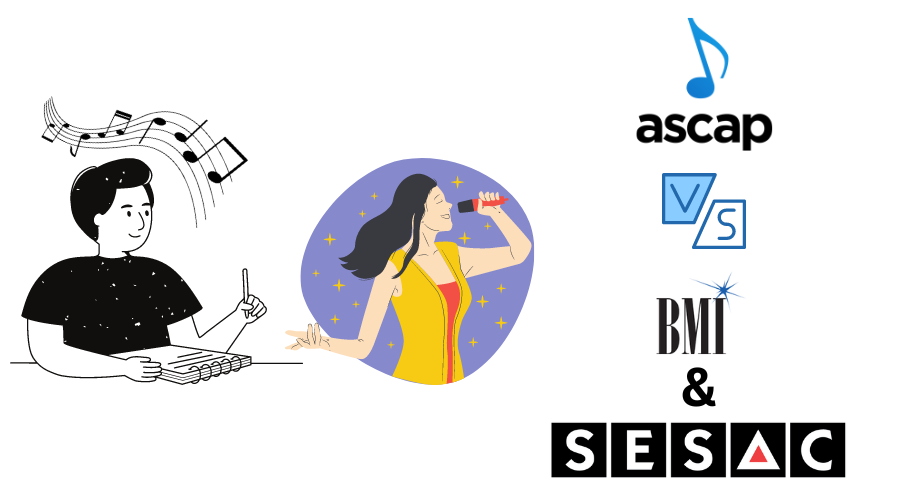
ASCAP isn’t the only organization that pays performance royalties.
There are other performing rights organizations or PROs that you can join if you’re a songwriter, publisher, recording artist, or composer.
SESAC and BMI are two other PROs that you can consider for protecting your music. They share some similarities with ASCAP.
- All these organizations pay performance rights and don’t pay mechanical rights.
- These organizations divide the royalty equally between the songwriter and the publisher.
- 88% of all the money collected is paid to members.
- These organizations don’t require recurring membership fees.
- Members can register their performances online, without having to provide any physical documents.
- All organizations offer different deals and benefits to their members.
Choosing between different organizations can be a little challenging, especially for a new artist, as each one of them has its pros and cons.
SESAC
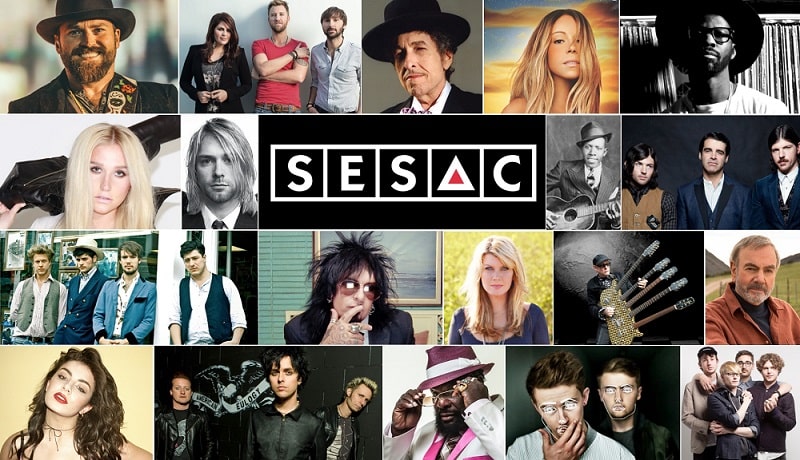
SESAC or the Society of European Stage Authors and Composers is a for-profit organization in the US and is the smallest one among the three.
It currently protects the rights of about 30,000 members, handling about 400,000 pieces of music work and artistic productions.
Unlike the other two PROs, members are invited to join SESAC and there’s no membership fee.
However, this means that it’s not available for everyone, especially new and aspiring artists.
Names like Neil Diamond, Adele, and Mariah Carey are members of SESAC.
Here are some of the benefits of joining this organization.
- Although SESAC pays out royalties in the same way as ASCAP and BMI, artists can also receive monthly radio royalty payments.
- It offers a discount to join Songtrust, an international rights management platform that allows artists, songwriters, and publishers to manage their work in different parts of the world.
- Members receive airport parking discounts.
- Members have a discount to receive the American Songwriter magazine.
- A 3-month free access to the Musician Atlas, an online networking directory to connect with music professionals and fans.
SESAC is more difficult to join, and because it’s a for-profit organization, it doesn’t spend much of its income to improve the services provided to the members, unlike ASCAP and BMI.
This organization is more suitable for established artists, who aren’t willing to wait for months to receive their royalty payments.
BMI

BMI or Broadcast Music Inc is another American PRO, which represents more than 750,000 members of artists, songwriters, and publishers, making it the largest PRO in the US.
Sam Smith, Lady Gaga, and Taylor Swift are among BMI’s members.
This organization doesn’t charge songwriters to join, which can be a big plus for an aspiring artist.
However, if you’re a publisher, you should pay a one-time fee of $150 to become a member. Companies pay a one-time fee of $250.
Here are some benefits of joining BMI.
- Members have access to NXNE or North By Northeast, a musical festival held in Ontario Canada, which focuses on live music, e-gaming, and live comedies.
- Discounts to join LARAS or the Latin Academy of Recording Arts & Sciences. This is an international-based organization for all Latin music songwriters, recording artists, producers, and other technical and creative professionals who work in this industry.
- Discounts for the Billboard Latin Conference, which is an exclusive feature for Latin music artists.
- Access the Musician Atlas.
- Access to Muzlink, an online marketing and promotion service that allows artists to share and sell their music on different platforms.
- Songwriters can join the Hall of Fame.
BMI can be a little more expensive if you’re a publisher, but if you work in the Latin music genre, it might be a better choice for you.
